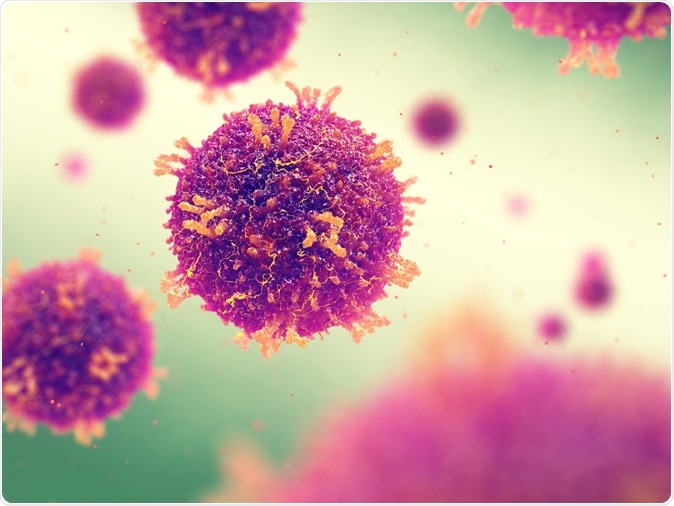At Rockland county in New York City's northern regions, this week on Tuesday (26th March 2019), a ban was called into action. Children who are not vaccinated against measles are now banned to attend any public place. This comes as a result of the recent measles outbreaks which has caused more than 150 cases since last fall.

Measles virus illustration. Credit: Nobeastsofierce / Shutterstock
Measles is a vaccine preventable viral illness that has made a resurgence because of the worldwide anti-vaccination conspiracy theories that have prompted many parents to leave their children unvaccinated. Rockland County Executive Ed Day at a news conference said, “It's an attention grab, there's no question about it.” He agreed that this is the most extreme step that has ever been taken in the nation and hopes it would rouse parents into vaccinating their children and protecting them from the infection and its consequences.
Day said that in the Rockland County there has been a heavy outbreak of measles among Orthodox Jewish communities where the vaccinations rates are low. The declaration states that all individuals under the age of 18 years who are not vaccinated are banned from public gatherings including civic centres, schools, shopping malls, restaurants and places of worship. The ban comes into immediate effect and lasts for at least the next 30 days. A violation could be met with a punishment of up to six months in jail.
Day insisted that the intention was not to arrest people but raise awareness about the seriousness of the condition and the immediate efforts that need to be put in. He said, “There will not be law enforcement or deputy sheriffs asking for vaccination records. That is ridiculous. However, parents will be held accountable if they're found to be in violation of this emergency declaration.”
According to the World Health Organization, the only way to stop the spread of this infection is to ensure that at least 92 to 95 percent of the population is vaccinated. Day confirmed that at present at the Rockland County only 72.9 percent of individuals less than 18 years of age have been vaccinated. There is a population of 300,000 people in the county he said.
Michael Sussman, a Civil rights attorney represents parents of 44 children who were not vaccinated and were thus not allowed to attend a Waldorf School in the county. He said that this step is “irrational”. He said in a statement that the system was, “punishing people who don't have the illness rather than quarantining people who are sick.” He said that only measles patients and their close contacts need to be quarantined so that the disease spread is stopped. The lawsuit has said that this ban is violating the constitutional rights of the people. In a recent hearing a federal judge has denied the request of the parents that their unvaccinated children be allowed to return to the Waldorf School. The judge cited the “unprecedented measles outbreak,” as the reason behind his statement. Paediatric organisations have supported this legislation.
The Centres for Disease Control and Prevention (CDC) has said that three or more cases around a county counts as an outbreak. Rockland County has seen 153 confirmed cases since last autumn said Day. Day added that upcoming religious holidays of Easter and Passover are considered when this ban was declared. He said, “We want people to be able to celebrate. We don't want to see a repeat of how this outbreak started when we saw people gathered together and then fall ill last fall.”